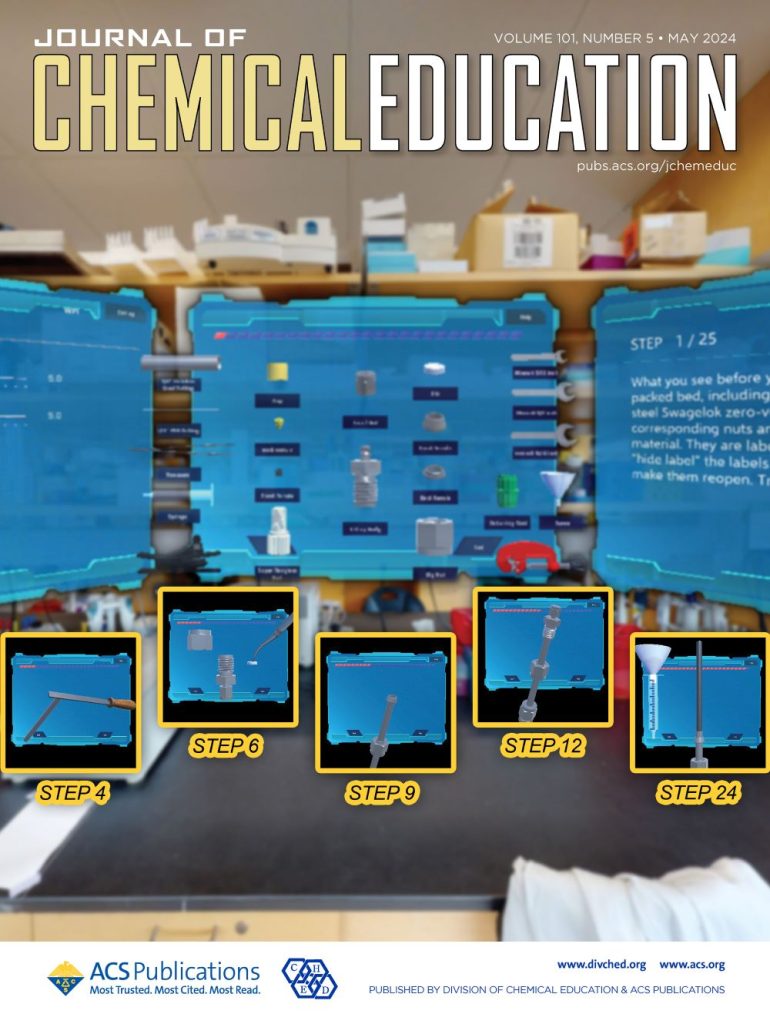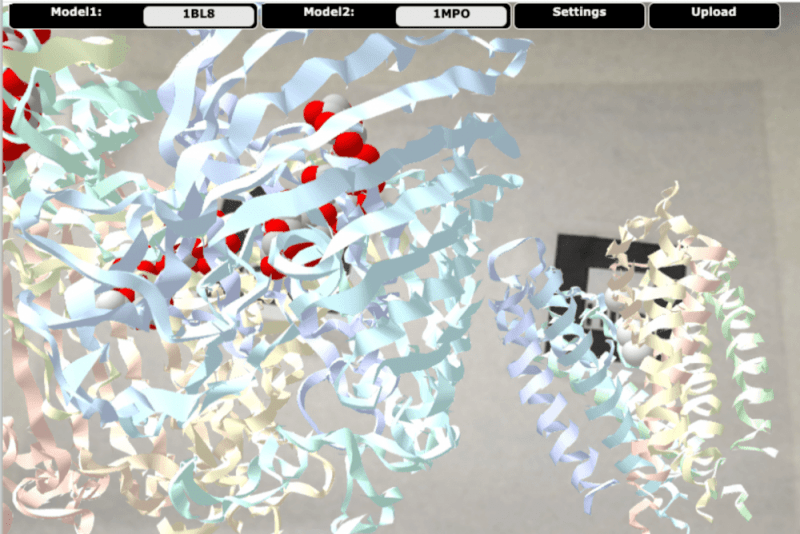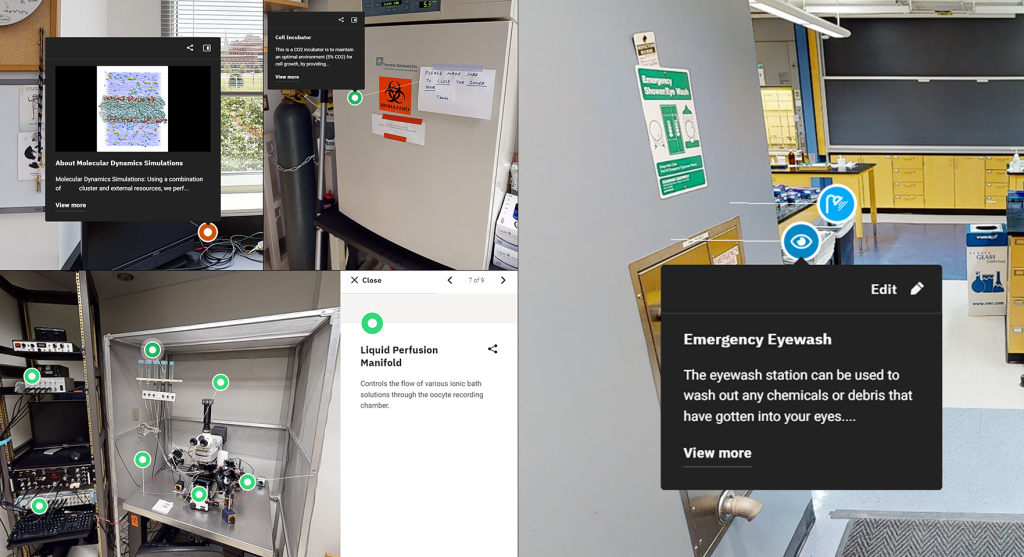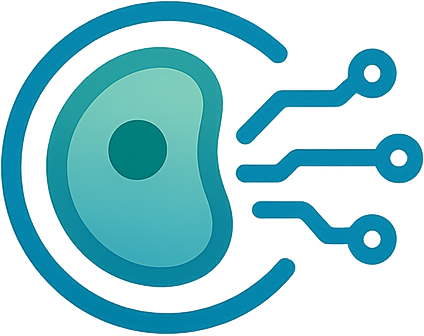
Flow Chemistry Training in AR
As part of the Department of Energy RAPID grant, we developed an augmented reality program to build a flow chemistry setup. The overall objective of this project was to create an AR program that teaches flow chemistry in an engaging manner, creating excitement about exploring this process. The flow chemistry application uses the HoloLens 2 to project holograms in a laboratory or classroom environment. The HoloLens 2 is a powerful AR device that includes capabilities for hand gestures, spatial mapping, and voice recognition. Although the HoloLens 2 does include other features that may be relevant in future training programs, we focus on voice recognition in our system because hand gestures currently require training to achieve proficiency.
Publication
Chen, Max, Yichen Li, Hilson Shrestha, Noëlle Rakotondravony, Andrew Teixeira, Lane Harrison, and Robert E. Dempski. “FlowAR: A Mixed Reality Program to Introduce Continuous Flow Concepts.” Journal of Chemical Education (2024).

Protein Structure Visualization In AR
We designed and built a web application to visualize the protein Structure in Augmented Reality and help undergraduates have a better understanding of the structure. The structure model can be downloaded directly from the PDB bank through the PDB ID and be loaded to the AR environment by scanning the 2D marker. There are multiple viewing styles for each structure. Two structures can be loaded simultaneously.
The application is developed using A-Frame and GL-Mol. More details can be found here.

360 Lab Virtual Tours
We created 360 virtual tours for research laboratories and facilities using Matterport. Virtual tours are immersive experiences that allow individuals to explore and interact with a physical space remotely. These tours provide a 360-degree view and often incorporate multimedia elements, such as images, videos, and audio, to enhance user engagement.
Research labs and facilities can benefit from virtual tours as a powerful tool for advertising and showcasing their capabilities. Teaching labs can use virtual tours to deliver learning materials in an engaging way.
Publications
Chen, Max, Dashiell Elliott, Robert Dempski, and Raúl Orduña Picón. “Designing Interactive Virtual Tours for Education: Two Case Studies on Virtual Tours of the Chemistry and Biochemistry Laboratories.” In Proceedings of the 19th International Conference on the Foundations of Digital Games, pp. 1-4. 2024.
Dashiell Elliott, Claire Li, Max Chen, Robert Dempski, and Raúl Orduña Picón. “Extended Reality, Extending Chemistry Learning: Supporting Students in Understanding Safety and Molecular Polarity in the College General Chemistry Lab”. 2025 Northeastern Chemistry Education Research Symposium
